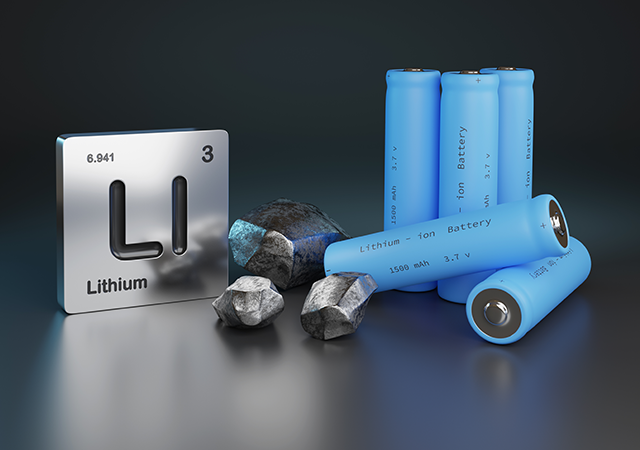As the demand for electric vehicles grows, nickel metal hydride (NiMH) batteries continue to dominate advanced battery technologies. However, manufacturing processes can produce wastewater laden with nickel and other metals, posing environmental and health hazards. In response, this application notes outlines how METTLER TOLEDO’s EasyPlus UV/VIS and UV/VIS Excellence spectrophotometers use a dimethylglyoxime method to measure nickel in battery wastewater at 445 nm—aligning with established guidelines for water analysis. If your goal is to maintain stringent regulatory compliance and protect ecosystems, these instruments and methods offer a streamlined approach to compliant water testing.
 |
Dimethylglyoxime Method
Why Nickel Matters
Nickel is the fifth most abundant element in the Earth’s crust, integral to NiMH batteries used in electric and hybrid vehicles. But as water cools equipment and cleans batteries, nickel can migrate into wastewater streams. If unaddressed, nickel contamination can affect ecosystems and human health—causing allergies, kidney issues, and even cancer.
Principle of the Dimethylglyoxime Method
Using METTLER TOLEDO’s EasyPlus or Excellence UV/Vis spectrophotometers, a sample containing Ni²⁺ ions is treated with iodine (an oxidizing agent) and dimethylglyoxime in an ammoniacal solution. This reaction creates a red-brown nickel complex, measured at 445 nm. The color intensity is directly proportional to the concentration of nickel, making the method both robust and easy to implement.
Key Advantages:
- ISO 4939:2016 alignment
- Measurement range: 0.05 to 2 mg/L using a 50 mm pathlength cuvette
- Time-efficient with minimal manual steps
Step-by-Step Procedure
1. Reagent Prep and Calibration
- Prepare a nickel stock solution (20 mg/L).
- Formulate working standards (0.05–2.00 mg/L).
- Create auxiliary reagents like ammonium citrate and iodine solutions per the method instructions.
2. Sample Preparation
- Pipette 5 mL of wastewater into a 50 mL flask.
- Add 10 mL of ammonium citrate, 2 mL of iodine solution, and 10 mL of DMG solution.
- Dilute to the mark with deionized water, mix, and let stand for 15 minutes.
3. Measurement at 445 nm
- Insert the prepared sample in the instrument (with a 50 mm pathlength cuvette).
- Record absorbance within one hour to ensure stable color development.
 |
Figure 2: Calibration of Nickel obtained on UV7 Excellence spectrophotometer. |
Results and Discussion
Calibration curves (0.05–2.00 mg/L Ni) showed strong linearity (R² ≈ 0.9999). By comparing known standards and real wastewater samples, both METTLER TOLEDO EasyPlus UV/VIS and UV/VIS Excellence spectrophotometers provided consistent results—confirming the reliability of this colorimetric approach for nickel detection.
Further Water Testing Insights
This study underscores the value of UV/Vis spectrophotometry in water analysis—particularly for heavy metals. You can find additional methods and references for diverse water quality parameters (from nitrates to COD) at METTLER TOLEDO’s Water Testing landing page, where UV/Vis solutions streamline everything from sample prep to results documentation.
Conclusion
Detecting nickel in battery wastewater is crucial for environmental stewardship and regulatory compliance. By combining the dimethylglyoxime reaction with METTLER TOLEDO’s advanced UV/Vis instruments, labs can automate calibration and data handling, ensuring accurate, reproducible measurements. Whether you’re overseeing EV battery manufacturing or an industrial wastewater facility, adopting this method helps safeguard both human health and our shared ecosystems.
 |
Take the Battery Wastewater Compliance Challenge: Are You Nickel‑Savvy?
Are you sure your lab’s nickel testing meets ISO 4939:2016? Dive into our 5‑question quiz on battery wastewater compliance! Test your mastery of the DMG method, environmental risks, and data integrity standards—then discover how your results stack up. Ready to safeguard water quality and stay compliant?
Looking for More Water Testing Applications?
Check out METTLER TOLEDO’s comprehensive portfolio of UV/Vis solutions, designed to tackle a wide range of contaminants and parameters—ensuring you meet global water quality standards with ease.
Anika Adams is Senior Product Manager for UV/Vis Spectrophotometers at METTLER TOLEDO, where she focuses on driving innovation and optimizing customer workflows.
With a degree in business administration and experience spanning software development, mechanical engineering, and production, Anika brings a multidisciplinary perspective to the laboratory business. Her expertise lies in automating and enhancing customer processes, ensuring both product excellence and customer satisfaction.





